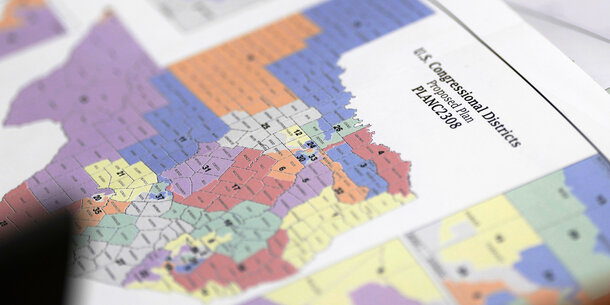The Supreme Court has concluded that federal courts cannot rule on the legality of President Trump’s plan to exclude undocumented people from the Census count used to distribute congressional seats to each state. The Court’s decision in Trump v. New York allows President Trump to try to implement his plan by lifting lower court rulings blocking it.
This latest development sets the stage for more litigation over Trump’s attempts to evade the longstanding constitutional rule that everyone counts, regardless of their citizenship status, and casts an ominous cloud over the upcoming apportionment.
The Constitution requires that seats in the House be apportioned among the states based on “the whole number of persons in each state.” The more people in a state, the more people in Congress to represent them. The fewer people, the fewer congressional seats. For 230 years, every branch of government has understood this requirement to count all persons for apportionment to mean just that: “persons” means people, and “people” means everyone.
In July, however, Trump announced his intent to depart from this rule, issuing a memorandum declaring that he would exclude undocumented people from the apportionment base, solely on the basis of their immigration status. Lawsuits — and losses for the Trump administration — quickly followed.
The first ruling came from a three-judge federal district court sitting in New York, which unanimously concluded that the plan was illegal, writing that “[t]he merits of the parties’ dispute are not particularly close or complicated.” After the Trump administration appealed the New York decision to the Supreme Court, two other three-judge panels — one in California and one in Maryland — weighed in, agreeing that the plan was illegal for a combination of constitutional and statutory reasons.
Throughout its Supreme Court oral argument last month, the administration sent mixed messages as to whether it will be able to gather sufficient data to allow the president to exclude all undocumented people or even smaller subsets of the undocumented population, like people in immigration detention facilities.
Despite compelling evidence to the contrary, on Friday the Supreme Court accepted the Trump administration’s representations and overruled the New York court. In an unsigned opinion, the Court declared that the memorandum was not yet suitable for federal court review because the harm it will inflict on the challengers is not yet clear. The Court reasoned that there is no injury yet because it is not yet known to what extent the president will be able to implement his plan, how many people he will be able to exclude, and where among the states those people will be located.
“The Government’s eventual action will reflect both legal and practical constraints, making any prediction about future injury just that — a prediction,” the Court wrote. It consequently determined that it would be more prudent to wait to see the policy’s effect more concretely before ruling on its legal merits. The challengers will now have to return to the trial courts if and when the president follows through.
Justice Stephen Breyer — joined by Justices Sonia Sotomayor and Elena Kagan— forcefully dissented, cutting to the core of the dispute: “Where, as here, the Government is acknowledging it is working to achieve an allegedly illegal goal, this Court should not decline to resolve the case simply because the Government speculates that it might not fully succeed.”
As Breyer further emphasized, the policy of excluding undocumented people because they are undocumented would be illegal whether all undocumented people are excluded or only subsets. Echoing the lower court, he wrote that the question of the plan’s legality “is not difficult.” Quite simply, “the touchstone for counting persons in the decennial census is their usual residence, not their immigration status” and immigration status is not “somehow a proxy for the concept of residency.”
The Court’s decision now gives Trump room to move forward with the policy, notwithstanding its clear illegality in any form it might take. And, in doing so, the Court has cast unnecessary uncertainty over the integrity of the upcoming apportionment itself.
At its foundation, the plan represents Trump’s attempt to decide for himself who should count for apportionment, even though the Constitution has already decided for him. His tools for this task: complex immigration policy, data of dubious merit, and hidden criteria. By allowing Trump to pursue his policy — at least for now — the Court’s order creates room for political chicanery where previously there was none. The administration’s lack of clarity about how it plans to proceed only heightens this threat. As several former Census Bureau directors warned the Court in a friend-of-the-court brief, this situation risks the legitimacy of the census by suggesting that the final counts reflect a political calculus rather than unbiased statistics.
Any political machinations using citizenship data will be racialized as well, with communities of color bearing the brunt of any harm that results. In that sense, the Court’s decision also clears the way for the Trump administration’s ongoing attempts to manipulate the census toward racist ends, whether through a citizenship question or a sped-up census process, or, in this case, simply excluding Black and brown people from the count once it’s all done.
The Court should and may well undo Trump’s policy if he ultimately executes on it. But the surer and safer path would have been to strike it down now rather than place the burden on affected communities, Congress, and the courts to try damage control later.




